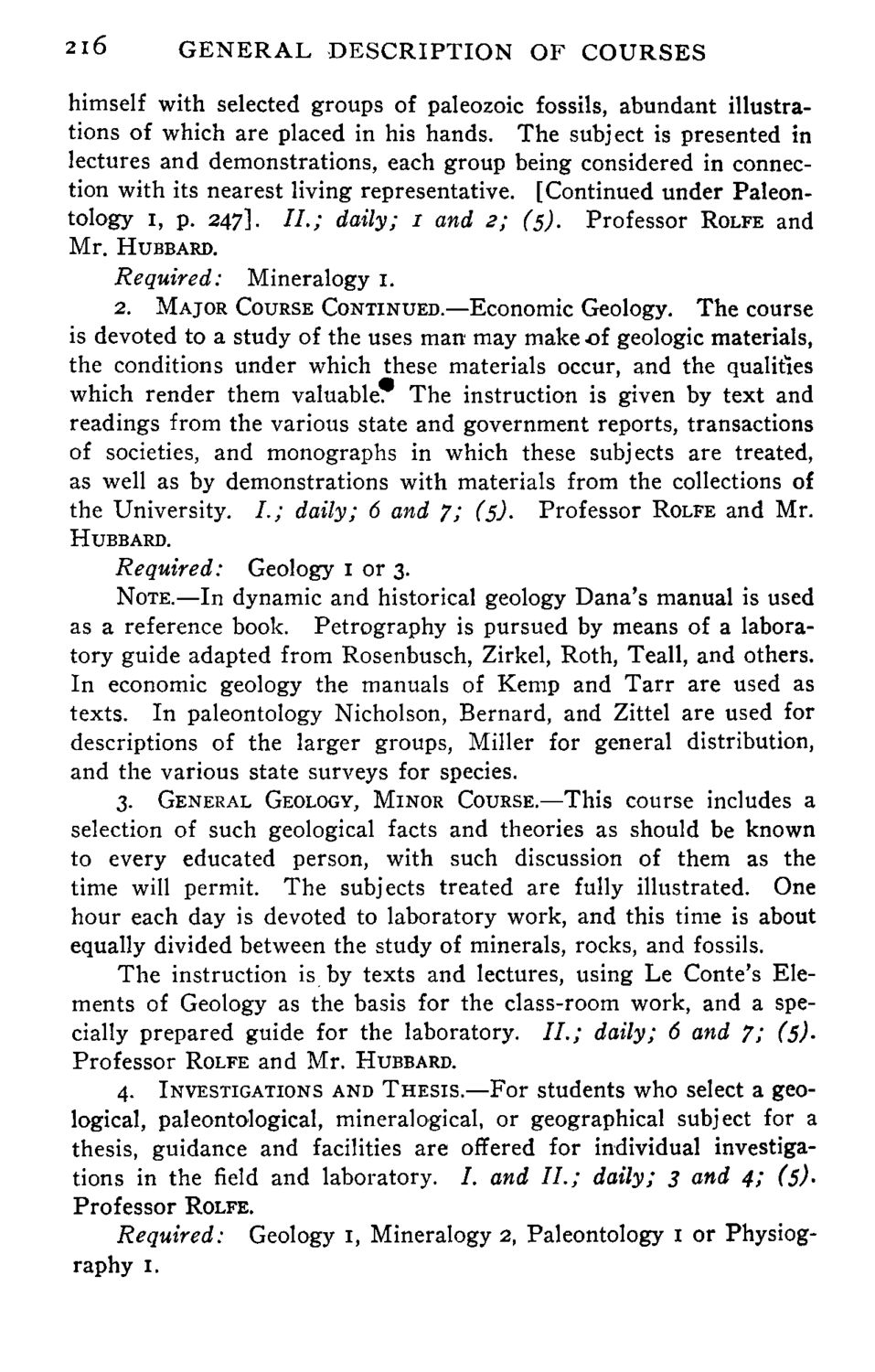Caption: Course Catalog - 1899-1900
This is a reduced-resolution page image for fast online browsing.

EXTRACTED TEXT FROM PAGE:
2l6 GENERAL DESCRIPTION OF COURSES himself with selected groups of paleozoic fossils, abundant illustrations of which are placed in his hands. The subject is presented in lectures and demonstrations, each group being considered in connection with its nearest living representative. [Continued under Paleontology i, p. 247]. / / . ; daily; 1 and 2; (5). Professor ROLFE and Mr. HUBBARD. Required: 2. Mineralogy 1. The course MAJOR COURSE CONTINUED.—Economic Geology. is devoted to a study of the uses man may make of geologic materials, the conditions under which these materials occur, and the qualities which render them valuable. The instruction is given by text and readings from the various state and government reports, transactions of societies, and monographs in which these subjects are treated, as well as by demonstrations with materials from the collections of the University. / . ; daily; 6 and 7; (5). Professor ROLFE and Mr. HUBBARD. Required: Geology 1 or 3. NOTE.—In dynamic and historical geology Dana's manual is used as a reference book. Petrography is pursued by means of a laboratory guide adapted from Rosenbusch, Zirkel, Roth, Teall, and others. In economic geology the manuals of Kemp and Tarr are used as texts. In paleontology Nicholson, Bernard, and Zittel are used for descriptions of the larger groups, Miller for general distribution, and the various state surveys for species. 3. GENERAL GEOLOGY, MINOR COURSE.—This course includes a selection of such geological facts and theories as should be known to every educated person, with such discussion of them as the time will permit. The subjects treated are fully illustrated. One hour each day is devoted to laboratory work, and this time is about equally divided between the study of minerals, rocks, and fossils. The instruction is by texts and lectures, using Le Conte's Elements of Geology as the basis for the class-room work, and a specially prepared guide for the laboratory. / / . ; daily; 6 and 7; (5). Professor ROLFE and Mr. HUBBARD. 4. INVESTIGATIONS AND THESIS.—For students who select a geo- logical, paleontological, mineralogical, or geographical subject for a thesis, guidance and facilities are offered for individual investigations in the field and laboratory. /. and II.; daily; 3 and 4; (5). Professor ROLFE. Required: raphy 1. Geology 1, Mineralogy 2, Paleontology I or Physiog-
|